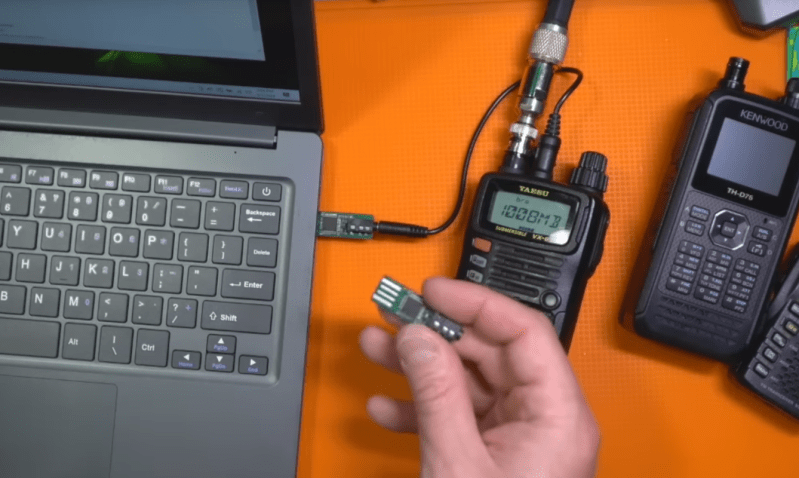Emails Over Radio

The modern cellular network is a marvel of technological advancement that we often take for granted now. With 5G service it’s easy to do plenty of things on-the-go that would …read more Continue reading Emails Over Radio
Collaborate Disseminate

The modern cellular network is a marvel of technological advancement that we often take for granted now. With 5G service it’s easy to do plenty of things on-the-go that would …read more Continue reading Emails Over Radio

In amateur radio circles, almost no single piece of equipment serves as more of a magnet for controversy than the humble Baofeng handheld transceiver. It’s understandable — the radio is …read more Continue reading Getting to the Heart of a Baofeng
Hackaday has among its staff a significant number of writers who also hold amateur radio licenses. We’re hardware folks at heart, so we like our radios homebrew, and we’re never happier than when we’re working at high frequencies.
Amateur radio …read more
Another week, another exploit against an air-gapped computer. And this time, the attack is particularly clever and pernicious: turning a GPU into a radio transmitter.
The first part of [Mikhail Davidov] and [Baron Oldenburg]’s article is a review of some of the basics of exploring the RF emissions of computers …read more
Continue reading GPU Turned Into Radio Transmitter To Defeat Air-Gapped PC
Anyone who worked in the tech field and lived through the Y2K bug era will no doubt recall it as a time seasoned with a confusing mix of fear and optimism and tempered with a healthy dose of panic, as companies rushed to validate that systems would pass the rollover …read more
Of all the images that amateur radio conjures up, the great outdoors doesn’t usually figure heavily. People seem to think hams sit in a dark room at a desk heavy with radio gear, banging out Morse code into late into the night and heedless of the world outside the window. …read more
Continue reading Hams Gone Wild: Amateur Radio Field Day 2019
Last week , I covered the ridiculously low barriers to entry to amateur radio, both in terms of financial outlay and the process of studying for and passing the FCC examination. You’ve had seven days, so I assume that you’ve taken the plunge and are a freshly minted amateur radio …read more
Continue reading The $50 Ham: Entry-Level Transceivers for Technicians
Not long ago, we published an article about researchers adding sensor data to passive RFID tags, and a comment from a reader turned our heads to a consumer/maker version which anyone can start using right away. If you’re catching up, passive RFID technology is behind the key fobs and stickers which don’t need power, just proximity to the reader’s antenna. This is a much “hackier” version that works with discrete signals instead of analog ones. It will not however require writing a new library and programming new tags from the ground up just for the user to get started, so …read more
By the time colour TV came to the United Kingdom, it was old news to Americans. Most of the viewing public on the Western side of the Atlantic had had the opportunity to see more than black-and-white images for years when in 1967 the BBC started transmitting its first colour channel, BBC2.
For Americans and continental Europeans, the arrival of colour TV had been an incremental process, in which the colour subcarrier had been added to their existing transmission standard. Marketed as “compatible color” to Americans, this ensured that their existing black-and-white TV sets had no need for replacement as …read more
![]() Continue reading Retrotechtacular: Information From The Days When Colour TV Was New
Continue reading Retrotechtacular: Information From The Days When Colour TV Was New
Critics say Trump’s FCC is trying to help a pro-Trump media company grow larger. Continue reading Democrats Ask FCC Why It’s Helping a Pro-Trump Media Company Consolidate Power